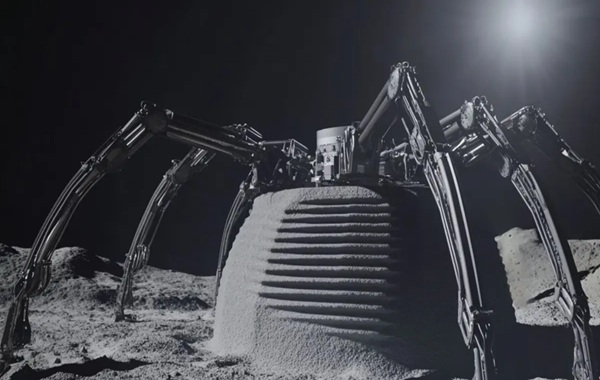Australia’s new robot 3D prints a home overnight; could build lunar bases one day
An advanced, spider-like robot is set to tackle construction challenges in Australia and potentially assist in building on the Moon in the future.
Named Charlotte, this robot was developed by the Australian companies Crest Robotics and Earthbuilt Technology. Its purpose is to deliver low-cost, low-carbon housing capabilities here on Earth.
Reportedly, the large hexapod robot can 3D print a 200-square-metre house in 24 hours.
Charlotte combines robotics and 3D printing to transform raw materials directly into structural walls.
Solving housing crisis on Earth
High costs and slow speed in standard construction are failing to meet demand, which is deepening the housing crisis.
Charlotte, a fully autonomous robot, is designed to reverse this trend by providing high-scale and speed building options.
According to the website, the robot is a product of Crest Robotics’ advanced capabilities combined with Earthbuilt Technology’s extrusion and compaction systems.
“Attached to Charlotte’s undercarriage, Earthbuilt’s extrusion system will collect readily available materials such as sand, Earth, and waste products like crushed brick, which are then bound in fabric and compressed to form the layers of a building,” the website described.
The method employed by Charlotte is similar to the sustainable building technique known as Earthbagging. It packs loose material into large tubes or bags and then compacts to create wall layers.
Lunar construction
One of the major applications for this robot is construction on the Moon.
As NASA and other space agencies prepare to establish a sustainable presence on Earth’s natural satellite, astronauts will face the huge task of building lunar habitats.
These crews will look up to robotic companions like Charlotte to automate and ease the laborious construction work required for a permanent Moon base.
The robot’s six-legged, spider-like design is a major engineering solution for this off-Earth deployment.
In space launches, every kilogram and cubic centimetre is precious.
Charlotte’s lightweight structure allows it to fold compactly for transport, managing to pack maximum construction capability into a highly portable platform.
In comparison, the standard large 3D printers need massive gantries (impractical for space travel).
Once on the lunar surface, its structure will enable it to extrude efficiently and compact lunar soil to build structures like domed shelters on the Moon.
“On the Moon, we require different building machinery. Charlotte’s lightweight design allows it to fold compactly for space travel while its agile and dynamic capabilities enable rapid construction on the Lunar surface,” the website noted.
Race to build on the Moon
Crest Robotics and Earthbuilt Technology join a competitive global effort to master off-world construction.
Various other companies and organizations are actively developing 3D printing technology for lunar and off-world construction.
One of the leaders in the field, ICON, is working with NASA on Project Olympus, a construction system designed to 3D print infrastructure (like habitats, landing pads, and roads) on the Moon using local regolith (lunar soil). The company has also 3D-printed the Mars Dune Alpha habitat for NASA’s year-long simulated missions on Earth.
Another one is the AI SpaceFactory company that won NASA’s 3D-Printed Habitat Challenge in 2019. The US-based company has been developing large-scale 3D printers and corresponding building materials made from simulated lunar or Martian regolith (soil).
If all goes as planned, Charlotte could advance autonomous construction technology on Earth and the Moon.
Source: Interesting Engineering
First Stars Appeared in a ‘Pre-Heated’ Universe, Says Surprising Study
Australia’s new robot 3D prints a home overnight; could build lunar bases one day

